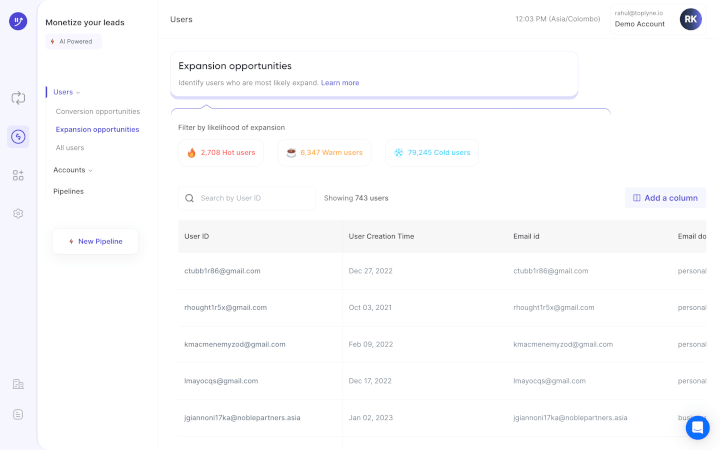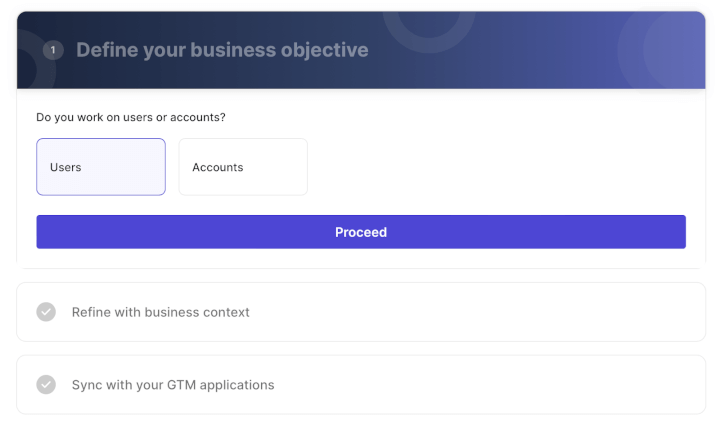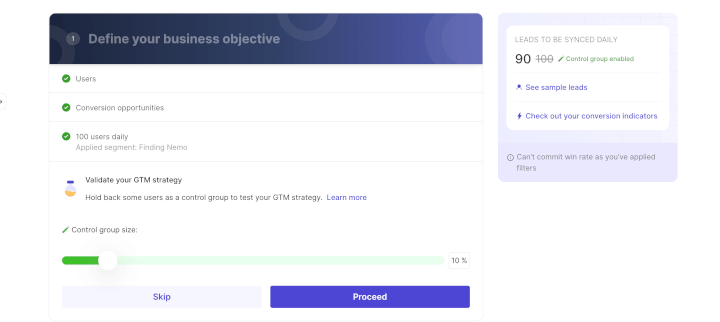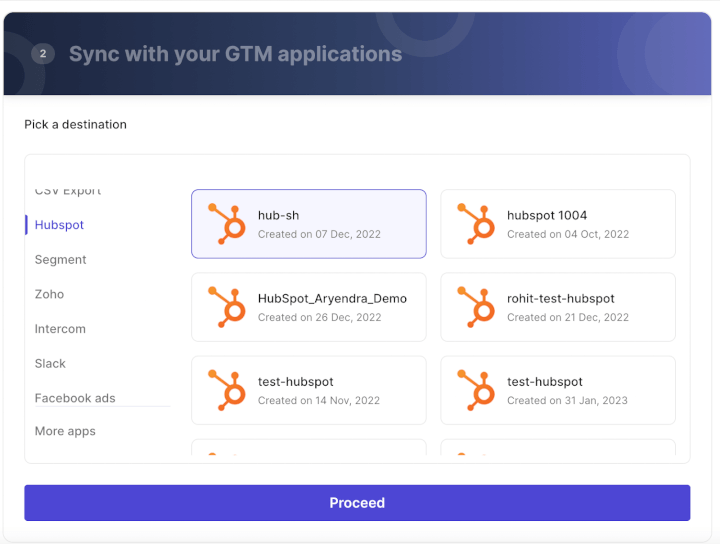The Ultimate Guide To Revenue Operations in 2023

Imagine a jigsaw puzzle, where the pieces of sales, marketing, and customer success interlock to create a masterpiece of profit. That’s Revenue Operations for you.

In this fast-paced era of ever-evolving markets, revenue operations is changing the game.
It's not just about sales or marketing anymore—it's about the seamless integration of every revenue-focused department, aligning strategies, and tearing down silos to achieve unprecedented growth.
In this guide, we unveil the secret sauce that transforms ordinary businesses into revenue-generating powerhouses.
Get ready to revolutionize your business and elevate your revenue game to new heights. Let’s dive in!
What Is Revenue Operations?
RevOps, or Revenue Operations, serves as a comprehensive business approach that propels predictable revenue growth by seamlessly integrating and aligning sales, marketing, and customer service departments.
Its mission?
To demolish those pesky departmental silos, turbocharge operational efficiency, and propel your revenue to new heights.
By fostering a culture of collaboration and equipping stakeholders with a full view of revenue streams, RevOps ensures that everyone's rowing in the same direction, empowering decision-makers to make informed choices.
Without RevOps, your team might be like…

So how does RevOps work its magic?
RevOps focuses on three aspects:
- People: RevOps aligns teams around a common goal and shared revenue goals. By fostering collaboration and synergy among different departments, it ensures everyone is working towards driving revenue growth.
- Data: No more scattered information or fragmented insights. RevOps connects the dots by bringing business and activity data from across your organization into one clear and accurate story about your revenue pipeline.
- Processes: RevOps is all about boosting operational efficiencies – ensuring every customer interaction is seamless and delightful. And guess what? A happy customer is more likely to become a loyal customer, driving higher revenue for your business.
How is revenue operations different from sales operations?
In the past, revenue operations and sales operations were often used interchangeably, but RevOps has emerged as its own distinctive function, commanding a critical role in driving revenue growth across all types of businesses.
You can think of SalesOps as a focused and siloed process that revolves around sales activities and converting customers, whereas RevOps aims to foster teamwork and problem-solving across various systems.
Sales operations specifically focuses on:
- Activities related to sales teams and reps
- Optimizing sales processes and managing the sales pipeline
- Enhancing sales productivity through training and automation tools.
…while revenue operations (RevOps) encompasses practices across all teams responsible for generating revenue.
RevOps takes a holistic view, considering the entire customer journey, revenue funnels, go-to-market execution, and customer experience.
It's not just about closing deals – RevOps strives to optimize pricing strategies, minimize revenue leakage, and harness the power of customer data to uncover lucrative opportunities.
RevOps can encompass Sales Ops, Marketing Ops, and Customer Success Ops, integrating various functions that contribute to revenue generation.

Why Is Revenue Operations Needed?
- Pressure to provide unified customer experience
Customers now have easy access to information and expect prompt responses, personalized content, and a seamless integration across various channels.
As a result, organizations are facing increasing pressure to adopt an omnichannel approach that spans their entire operations.
RevOps facilitates a synchronized approach to this, enabling all customer-facing teams to access relevant information and deliver personalized and consistent experiences at every interaction.
- Growth of cloud-based platforms
In the world of cloud-based models, customer equity and customer lifetime value have taken center stage as the primary metrics driving the value of businesses.
This shift in focus has compelled sales, marketing, customer experience, and support services teams to come together as a unified revenue team in order to effectively meet these key performance indicators.
- Speed of sharing customer data now determines selling effectiveness
Traditionally, sales and finance operate in separate systems that serve specific purposes.
This fragmented approach results in sales and finance teams making decisions based on incomplete customer data. For example, sales reps may attempt to upsell a customer without knowing that they are behind on payments.
The solution lies in bringing sales and finance together under a unified revenue process that revolves around what truly matters: the customer.

In today's business landscape, having access to real-time customer data is crucial for maximizing performance. Implementing a RevOps team can provide comprehensive and up-to-date visibility into customer engagement data, sales pipelines, and financial information.
- Collaboration has become fundamental to growth
In today's business landscape, the success of sales, marketing, customer success, and account management relies on their alignment throughout the entire customer journey.
When teams operate in silos, it can severely hinder momentum and impede progress. Issues like subpar Marketing Qualified Leads (MQLs) or disjointed client onboarding experiences are common symptoms of these departmental silos.
This is where Revenue Operations (RevOps) steps in, breaking down those silos and shifting the focus from individual departments to a collective and collaborative mindset that encompasses the entire revenue flow across the company.
5 Key Benefits of RevOps
- Aligns sales and marketing
RevOps offers a solution to the common challenge of misalignment between sales and marketing departments. By creating a unified revenue operations strategy, goals and revenue targets can be aligned, fostering collaboration rather than competition.
This ensures that every campaign and customer initiative has a measurable impact on the sales funnel, from initial lead generation to post-sale service. By mapping out clear incentives, RevOps sharpens the alignment of different teams, driving collective success.
- Spots inefficiencies in revenue cycles
Missed growth opportunities often result from a lack of visibility and understanding of the entire revenue cycle.
Here’s where RevOps comes to the rescue.
It provides a panoramic view of the revenue cycle, shedding light on those elusive roadblocks and silos that hinder efficiency and impede progress.
Kinda like when Batman’s looking down at Gotham City…

With RevOps in action, organizations gain the power to identify and address these inefficiencies head-on.
By removing these obstacles, teams can streamline processes, foster collaboration across departments, and deliver an exceptional customer experience.
- Helps reduce operational costs
By consolidating efforts and eliminating unnecessary tools, RevOps not only saves costs but also reduces what we call "tech sprawl." RevOps also acts as the ultimate data custodian, tackling messy data and ensuring its accuracy and accessibility.
No more wasting time and resources on overlapping or underutilized tools. Instead, you'll have a streamlined toolkit that aligns with your business objectives and maximizes efficiency.
With RevOps, you can simplify, optimize, and conquer revenue.
- Helps better adapt to market changes
Change is hard – but imagine being able to swiftly adapt to new technologies, market trends, or customer demands. With RevOps, you can proactively embrace change, mitigate risks, and stay agile in a rapidly evolving business environment.
No more scattered efforts, miscommunication between departments, wasted time, or lost revenue. Instead, you have a cohesive unit that can quickly respond to market changes, adjust strategies, and seize new opportunities.
- Ensures better revenue growth and forecasting
RevOps brings efficiency to the table, empowering each sales representative to generate more revenue without requiring additional resources. By streamlining processes and eliminating bottlenecks, RevOps creates a well-oiled revenue machine.
But it doesn't stop there. RevOps goes beyond individual success and sets the stage for overall revenue growth. How? By implementing a single framework that fosters collaboration and data sharing across departments. No more silos or isolated decision-making. Now, finance and executive teams can make informed choices that benefit the entire organization.
What Are the Essential Revenue Operations Metrics?
- Cost Per Acquisition
Your cost per acquisition, or CPA, is the cost required to acquire a new customer over a specific period.
Calculate it:
Divide the total cost of acquiring customers (including marketing expenses) by the number of new customers acquired during a given period.
- Pipeline velocity
This is the speed at which leads move through each stage of your revenue pipeline.
Calculate it:
Pipeline Velocity: (Qualified Opportunities x Average Contract Value x Win Rate) / ({Sales Cycle Length} / Lookback Period)
With pipeline velocity, the values you use and the period of time can both be adjusted according to your specific needs.
- Annual Recurring Revenue (ARR)
This is the revenue you expect to generate every year from subscriptions, upsells, and cross-sells.
Calculate it:
ARR = (Sum of subscription revenue for the year + recurring revenue from add-ons and upgrades) - revenue lost from cancellations and downgrades that year.
- Customer Lifetime Value
Also called CLV or LTV, this metric tells you the amount of revenue you earn from the average customer throughout their relationship with your business.
Calculate it:
CLV = Customer Value x Average Customer Lifespan
- Win Rate
Sales win rate pretty much explains itself – it’s how many opportunities you’re ‘winning’ (read: converting).
Calculate it:
Divide the percentage of opportunities that convert into won deals, by the total opportunities created over a timeframe.
- Customer Churn
You’re bound to lose customers as you grow – but it’s important to keep track of how many you’re losing over a period of time.
Calculate it:
Divide the number of churned customers (how many people have left your service), by the total number of customers you had during a specific period of time.
- Forecast accuracy
Stability is crucial – and forecast accuracy helps you understand how predictable your revenue is.
Calculate it:
Take the difference between your revenue forecast and the actual value of your revenue, and then divide the difference by the actual value.
This is called the Mean Absolute Percentage Error (MAPE) – and it’s one of the most common methods to calculate forecast accuracy.
How Do You Know You Need RevOps For Your Business?
- If the team is disjointed
Disjointed teams can have a disastrous impact on your momentum. From dealing with lackluster marketing-qualified leads to providing subpar client onboarding experiences, this disconnect puts your entire pipeline at risk.
That's where RevOps comes in to save the day.
It breaks down the barriers between departments and puts an end to internal conflicts. By shifting the focus from individual departments to a collective mindset, RevOps ensures that everyone in the company considers the flow of revenue as a whole.
- If your goal is to drive transparency and accountability at scale
In today's business landscape, driving transparency and accountability is paramount for success.
RevOps serves as the catalyst for change, ensuring that everyone on the revenue team is on the same page and working towards shared success metrics and KPIs. This holistic approach is crucial for achieving scalable growth and repeatable success.
With RevOps, transparency becomes the norm, accountability is embedded in every action, and predictability guides decision-making.
- If key business metrics don’t match up
When key business metrics don't align, RevOps teams take a different approach. Instead of focusing solely on departmental goals, they utilize a single source of data to measure and analyze the entire funnel. This helps reduce friction between teams and enables smoother decision-making toward shared objectives.
You don’t want to spend half your time thinking…

Historically, departments like sales, marketing, and customer success operated in isolation, resulting in disconnected data and activities. Revenue Operations teams bridge these gaps by utilizing a single source of truth, ensuring alignment and enabling better decision-making to achieve joint goals.
- If you use too many tools
If your business is drowning in a sea of tools and struggling with messy data, it can hinder your ability to track the flow of revenue accurately and make informed decisions.
RevOps comes to the rescue by activating a single entity dedicated to overseeing your data and tools. It brings order to the chaos by streamlining the acquisition, implementation, and management of these resources under one team. This consolidation not only saves costs but also improves efficiency and reduces the risk of data inconsistencies.
How to Implement Revenue Operations?
- Audit your revenue data
This includes examining various types of data associated with the customer journey, such as product data, account data, quotes, invoices, and payments.
By auditing your customer journey, you can identify areas of disconnect between departments and take necessary steps to bridge those gaps. Here are key aspects to consider during the audit:
- Content: Ensure your content aligns with your buyer's lifecycle stage. Identify any gaps and develop a plan to fill them.
- Tech Stack: Evaluate the technology used in your marketing, sales, and service departments. Ensure that it effectively tags and tracks every interaction your potential buyers make, providing you with accurate data for analysis and decision-making.
- Website: Audit your website and other digital footprints to ensure you have implemented best practices for conversions. By removing any barriers to entry, you create a smooth and frictionless experience for potential buyers.
A comprehensive revenue data audit can uncover valuable insights, address any disconnects between departments, and optimize your customer journey for enhanced success.
- Bring all your processes under one platform
Consolidate all your processes onto a single platform for seamless operations. Whether it's managing your product catalog, forecasting, contracts, orders, or billing, bringing everything together in a Customer Relationship Management (CRM) tool can streamline your customer touchpoints.

Creating a culture of collaboration requires the right processes in place.
RevOps steps in to activate standardized processes that promote accountability and trust within your organization. As your teams work together to turn prospects into loyal advocates, you'll experience additional benefits like shorter sales cycles, improved retention rates, and increased upsells.
It's all about optimizing your operations to maximize ROI and achieve long-term success.
- Use revenue data to grow revenue
Your RevOps team can leverage customer data to uncover valuable opportunities for upselling and cross-selling. By understanding a customer's payment capacity, preferred payment type, and identifying the next best product to pitch, you can strategically reach out at the right time with the most relevant offer.
Harness the power of revenue data to drive business growth.
If you’re a PLG (or PLG SaaS) company, your product will take center stage in driving revenue, accompanied by the significant revenue data it yields.
What if there was a tool capable of aiding you in generating product-led revenue and empowering your RevOps team with actionable data?
Enter Toplyne.
Use Toplyne to Amp Up Your RevOps
Introducing Toplyne, the headless sales AI that revolutionizes RevOps by seamlessly integrating all your product usage and lead segmentation data.
With Toplyne, you can:
- Source valuable insights: Toplyne taps into data sources like Amplitude and Mixpanel to gather deep product usage insights that matter to your business.
- Sync with GTM applications: Seamlessly sync the collected data with popular GTM applications such as Salesforce and Hubspot, ensuring a unified view across your RevOps ecosystem.
- Enhance data-driven decision-making: As a core function of RevOps, Toplyne takes data collection and insights to the next level, empowering you to make informed decisions based on critical data points around product performance and usage.
- Improve GTM metrics: Elevate your GTM strategy with Toplyne's assistance. Enhance signups, qualify more leads, boost activation rates, and drive referrals for exponential growth.
- Reduce churn and drive revenue: Leverage Toplyne's capabilities to effectively address churn and increase revenue through strategic upsells and cross-sells.
Say goodbye to fragmented data and hello to Toplyne—the ultimate ally in optimizing your revenue growth. Unlock the power of integrated data and propel your business to new heights with this cutting-edge sales AI.
Here’s how companies like Canva and Vercel generate sales pipeline from their self-serve funnel using Toplyne:
- Step 1/7: Create monetization playbooks to surface conversion and expansion opportunities (leads most likely to convert to paying customers, and teams most likely to grow into larger teams)

- Step 2/7: Choose the right leads to target – users (individual users) or accounts (a group of users with an organization).

- Step 3/7: Select the frequency at which you would want leads synced in your GTM apps.

- Step 4/7: Define how many leads you want by either the number of leads or your expected win rate, depending on your sales capacity and GTM strategy.

- Step 5/7: Build custom segments - Build custom segments based on And/Or logic at the deepest level of sub-properties within your product analytics.

- Step 6/7: Validate your GTM strategy - Hold back some users as a control group to test your GTM strategy.

- Step 7/7: Sync your product qualified pipeline into your GTM destinations - CRMs, sales & marketing execution tools, and customer engagement platforms.

Key Takeaways
Revenue Operations (RevOps) is a vital framework that enables organizations to drive revenue growth, enhance collaboration, and make data-driven decisions. By aligning teams, leveraging accurate data, and streamlining processes, RevOps empowers organizations to optimize their revenue potential and achieve sustainable success.

If there’s anything you should take away from this article, it’s that RevOps:
- Fosters alignment between sales, marketing, and customer success teams, leading to transparency and accountability.
- Promotes standardized processes and the adoption of technology to streamline workflows and enhance operational efficiency.
- Drives revenue growth by improving key metrics and enhancing the customer journey for increased customer satisfaction and customer retention.
- Is a strategic imperative in today's dynamic business landscape, enabling organizations to stay competitive and achieve long-term growth.
Implementing RevOps principles empowers organizations to transform their revenue operations and create a strong foundation for success. Embrace RevOps to unlock your organization's revenue potential and drive sustainable growth.


.svg)









.png)